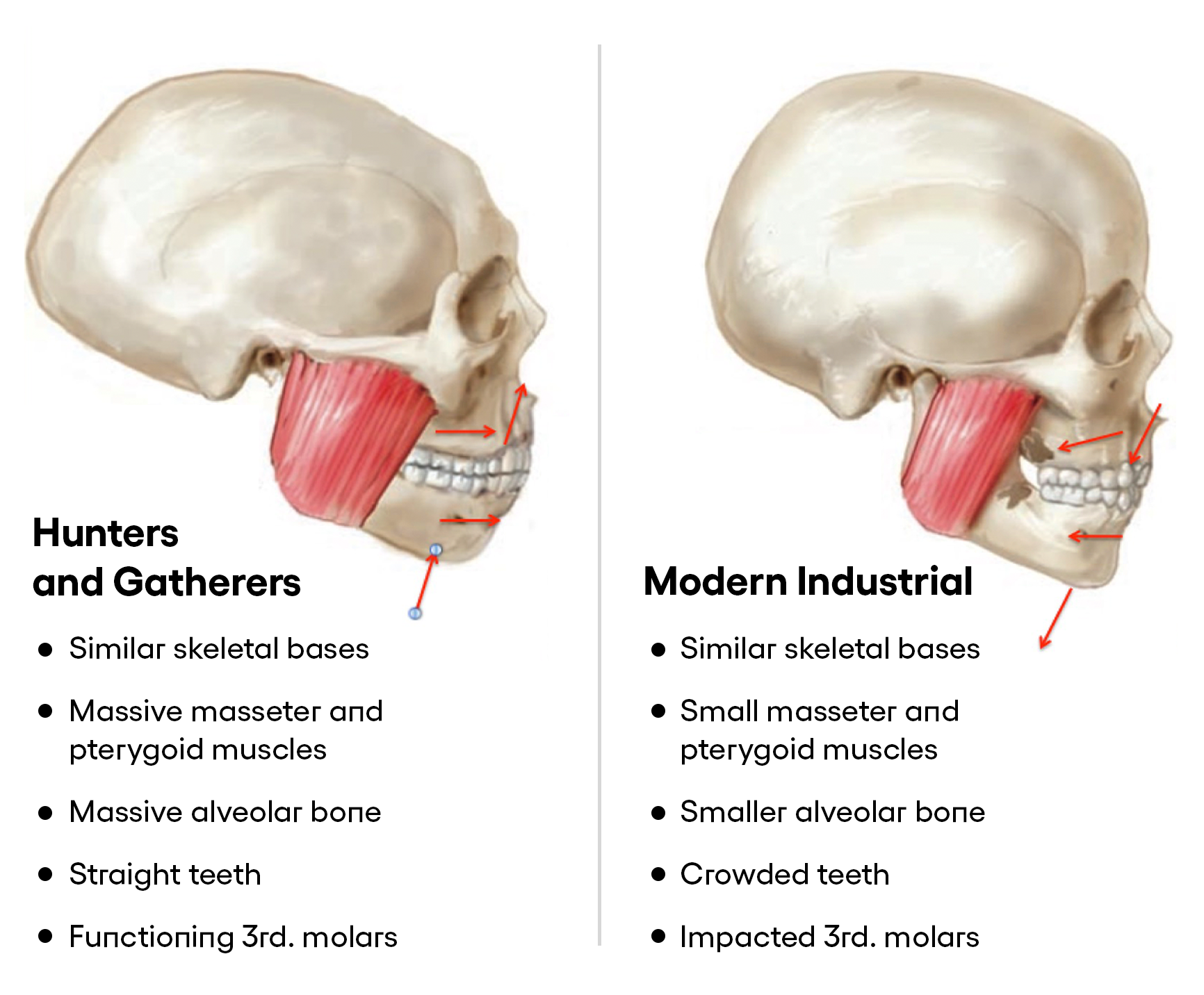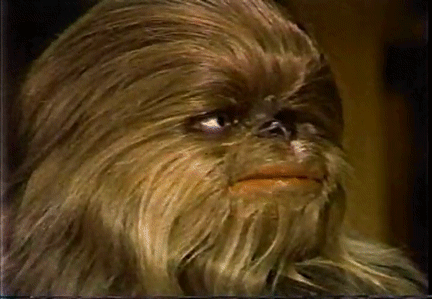Trojita
Rapid Response Threadmaker
I found this interesting article on how the human skull has been shrinking, the issues this can bring, and the likely causes. I'm not a fan of how the journalist titled the article "Our Skulls Are Out-Evolving Us" since I feel this is likely to give people the perception that this is an evolutionary change based on genetic variation. I went and read some dental journals to get a better overall perception on this issue.
The beginning of the article is telling a story about a mother with a son with a host of developmental issues that the mother felt was due to his lack of sleep (he was snoring, restless, and had bags under his eyes). He was diagnosed with sleep apnea, had his tonsils and adenoids taken out, which helped a lot for a year but then the issues started again. Further professional assistance wasn't able to help which one day led the mother to google the issue. On the internet she found a community of researchers and doctors that point out evidence that shows the boy's issues are becoming increasingly commonplace.
By "modern" they are literally talking about only a few hundred years. That's right, crooked teeth hardly existed before that. Preserved skeletal remains confirm this.
So what is causing this? It's the food we are eating. Not in a nutritional sense, but the mechanism for how our jaw and the rest of our palate develops through the chewing of food. Researchers noticed there was an overall change in the human skull/jaw when going from a hunter/gatherer life to an agricultural one. A large change then occurred during the industrial revolution.
The large change since the start of the industrial revolution is due to changing habits on how children are fed as babies. It used to be that the child breastfed for a longer amount of time and then started being gradually fed harder food. With the hunter/gatherer lifestyle this was particularly exemplified when children had to slowly start eating hard to chew things like roots and tough meat. This arduous chewing would lead to increased muscle mass in the jaw. Since the industrial revolution children are less likely to be breastfed for a longer amount of time and milk/formula bottle is commonplace. The much larger end of the bottle nipple can malform the mouth in comparison to being breastfed. Then we transition from milk to feeding the child baby food that doesn't have to be chewed.

The beginning of the article is telling a story about a mother with a son with a host of developmental issues that the mother felt was due to his lack of sleep (he was snoring, restless, and had bags under his eyes). He was diagnosed with sleep apnea, had his tonsils and adenoids taken out, which helped a lot for a year but then the issues started again. Further professional assistance wasn't able to help which one day led the mother to google the issue. On the internet she found a community of researchers and doctors that point out evidence that shows the boy's issues are becoming increasingly commonplace.
Micah represents a perfect case study of an alarming trend in human development with far-reaching implications: over the last 250 years, our skulls have morphed in dangerous and troubling ways. The problem with Micah, they say, is his face.
Science suggests that crooked teeth, overbites, narrow jaws, and crimped nasal airways are a modern phenomenon. Skeletal remains show that just 300 years ago, humans commonly displayed straight, perfectly aligned teeth, wide jaws, flat palates and the large nasal passages that signal habitual, healthy breathing.
By "modern" they are literally talking about only a few hundred years. That's right, crooked teeth hardly existed before that. Preserved skeletal remains confirm this.
So what is causing this? It's the food we are eating. Not in a nutritional sense, but the mechanism for how our jaw and the rest of our palate develops through the chewing of food. Researchers noticed there was an overall change in the human skull/jaw when going from a hunter/gatherer life to an agricultural one. A large change then occurred during the industrial revolution.
The large change since the start of the industrial revolution is due to changing habits on how children are fed as babies. It used to be that the child breastfed for a longer amount of time and then started being gradually fed harder food. With the hunter/gatherer lifestyle this was particularly exemplified when children had to slowly start eating hard to chew things like roots and tough meat. This arduous chewing would lead to increased muscle mass in the jaw. Since the industrial revolution children are less likely to be breastfed for a longer amount of time and milk/formula bottle is commonplace. The much larger end of the bottle nipple can malform the mouth in comparison to being breastfed. Then we transition from milk to feeding the child baby food that doesn't have to be chewed.

More recently, our faces have begun to deform. Today, our skulls are marked by high, narrow palates, short lower jaws and, often, insufficient space. When children drop their baby teeth, there's typically inadequate room for the adult teeth, which leads to crowding and misaligned teeth. Worst of all, this anatomy encourages mouth-breathing, which can, in turn, lead to under-the-radar sleep difficulties and a whole array of problems ranging from behavioral challenges, anxiety, and depression to cognitive issues.
"What happened?" Boyd asked me and Monge, turning a mold over in his hands. "How could all of a sudden we develop crooked teeth and narrow jaws, and impacted nasal airways? That's only recently happened, and it coincides with women going into the textile mills in the industrial revolution."
Skeletal records show that for hundreds of thousands of years, people had beautiful skulls: straight teeth, wide jaws, forward faces, large airways. Robert Corruccini, an emeritus anthropology professor at Southern Illinois University, found perfectly straight teeth and wide jaws in children's skulls from pre-Roman times among Etruscan remains in southern Italy.
Then, about 250 years ago, our faces began to change. Boyd argues that industrialization interrupted the ancestral patterns of weaning and feeding, with babies nursing on demand for years while also trying solid foods under adults' watchful eyes. Boyd says that the widespread adoption of bottle feeding, pacifiers and soft processed food deprived toddlers of practice chewing and distorted the shapes of their mouths. ("In modern society you have Gerber's baby food," Corruccini told me. "Etruscan kids had to chew once they were getting off breast milk. Babies have remarkably powerful chewing capabilities.")




/wall-murals-grey-alien.jpg.jpg)


